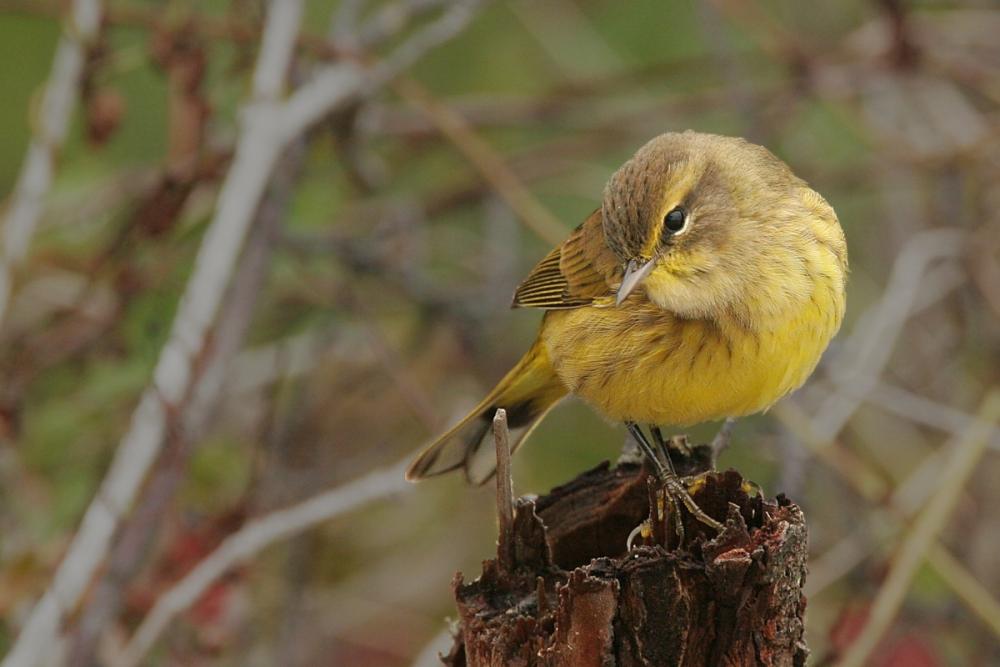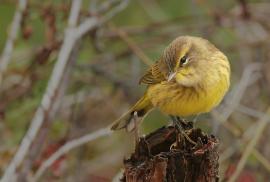Guide to Boreal Birds
Overview
The Palm Warbler is one of the first warblers to arrive in the spring, and at this season is commonly found feeding quietly on the ground, sometimes with flocks of sparrows. It is unusual among warblers of the genus Dendroica in nesting on the ground; the only other species that does this is the rare Kirtland's Warbler. It is also one of very few species that takes advantage of black spruce bog environments and often nests in areas with scattered trees and heavy undergrowth. Consequently, its breeding distribution generally corresponds to the distribution of these bogs and fens in boreal forests of Canada. Palm Warblers migrate earlier in spring and later in fall than most other wood-warblers. Because nesting habitat is often remote and difficult to traverse, and nests are difficult to find, much remains to be learned about this species‚ breeding biology. Numbers appear to be stable and Palm Warblers are fairly common within their normal range. There are currently no major threats to Palm Warblers‚ habitats as most of their breeding range is remote. Because of its preference for peatlands for nesting, this warbler is less likely to suffer from habitat fragmentation than are other species. Fragmentation of adjacent upland forests, however, may bring potential egg and nest predators.
Description
5 1/2" (14 cm). An olive-drab, streaked, ground-feeding warbler with bright olive rump, bright yellow undertail coverts, and distinctive habit of wagging its tail. Underparts vary from yellow to whitish buff, depending on age and geography; adults in spring have rufous cap.
Voice
Weak dry trill, like that of Chipping Sparrow but slower.
Nesting
4 or 5 brown-speckled white eggs in a grass nest fashioned with shreds of bark and lined with feathers and rootlets. Nest is placed on the ground in a grass clump, often at the base of a small tree or bush.
Habitat
In summer, bogs in the North; during migration, open places, especially weedy fields and borders of marshes.
Range/Migration
Breeds from west-central Canada east to Labrador and Newfoundland, and south to extreme northern portions of United States. Winters from southeastern United States southward.



